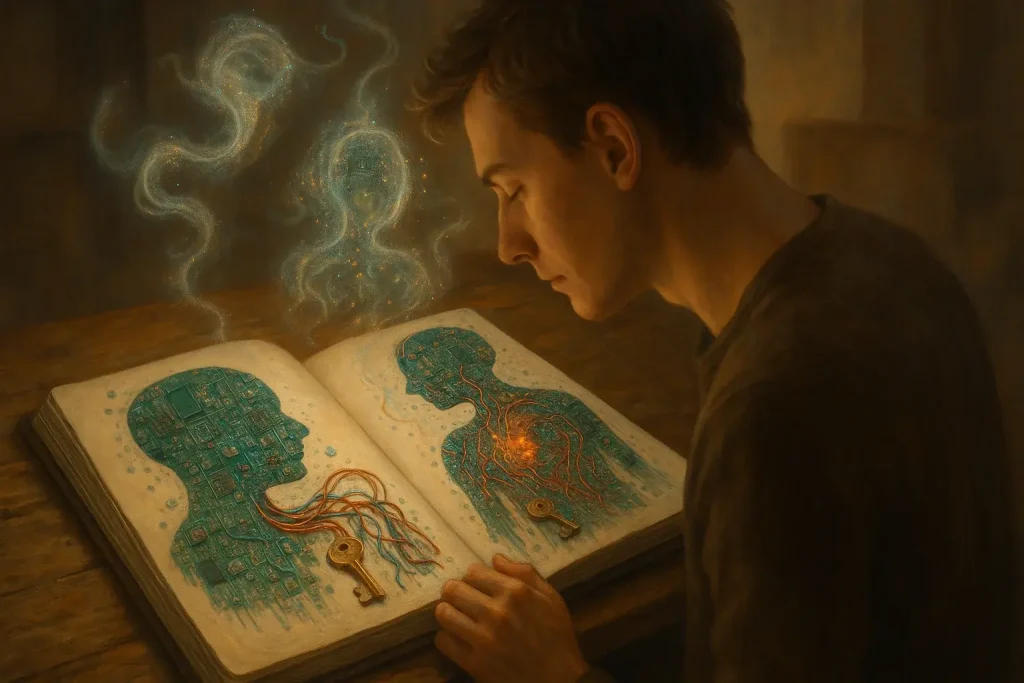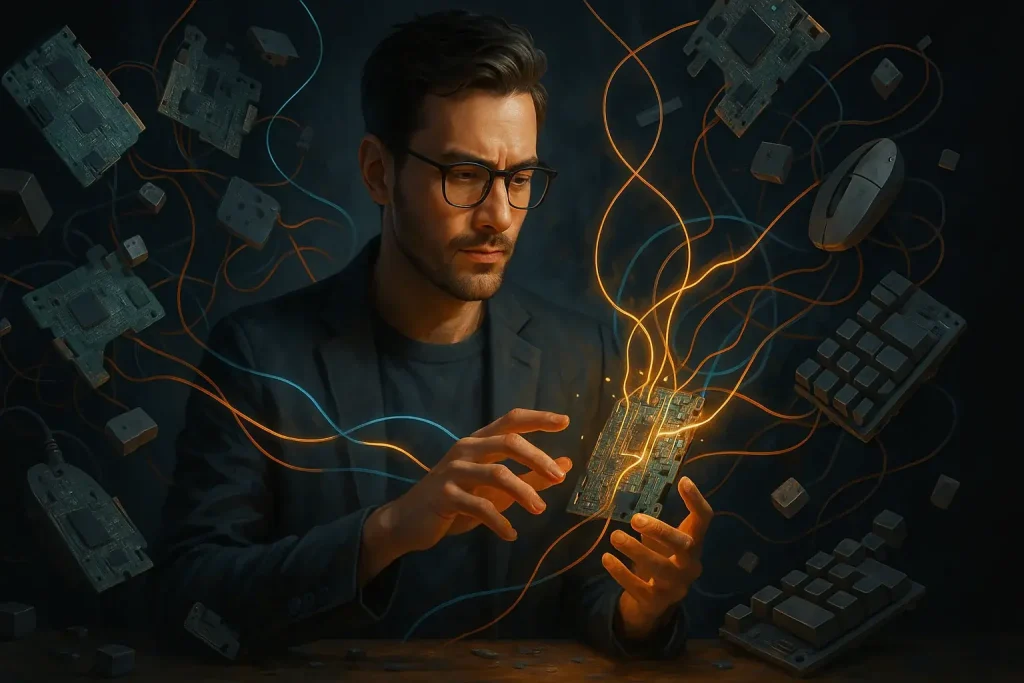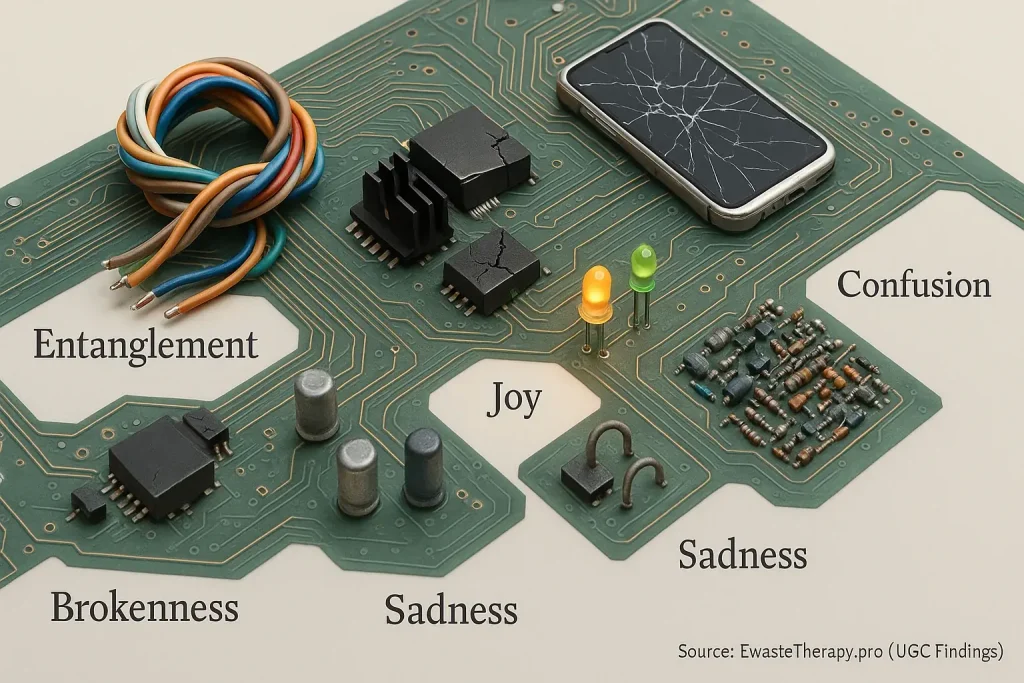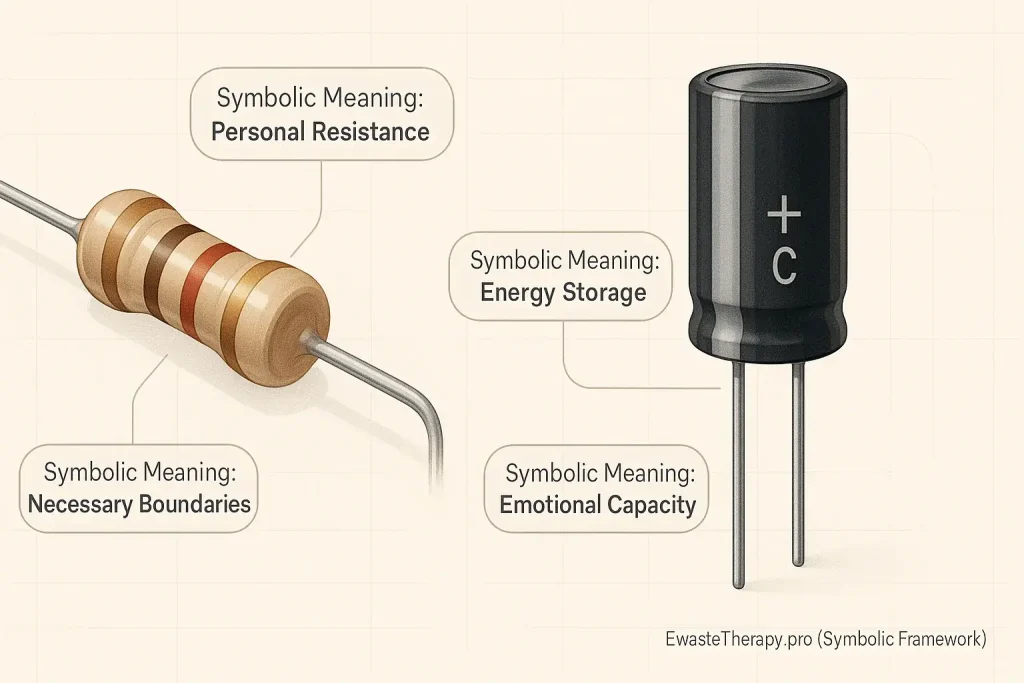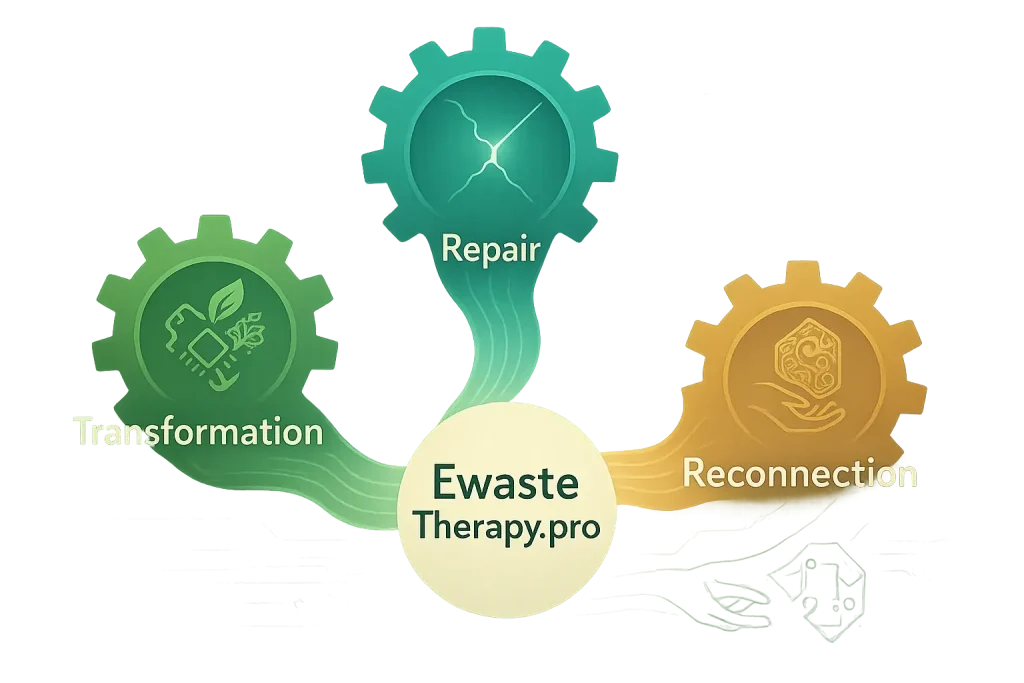The Weight We Carry: Why Letting Go Matters for Your Well-being
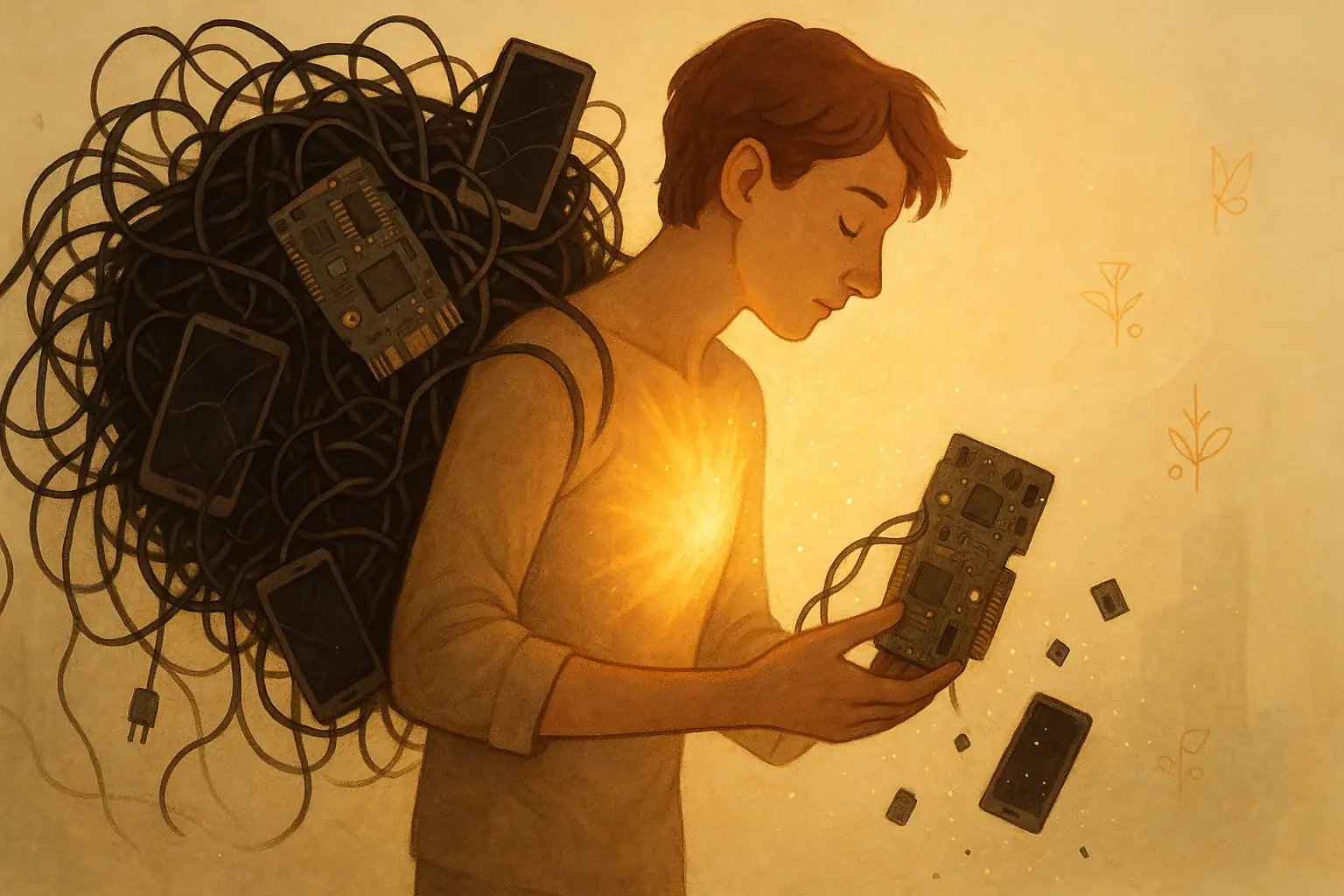
Ever feel you carry old emotional baggage? This tangled mess might include past hurts or outdated identities. Many of us struggle with this invisible weight, as countless shared experiences reveal. These emotional burdens impact daily well-being. They can hold you back. Our deep analysis of user narratives consistently shows these patterns affect countless individuals seeking change.
Letting go does not mean forgetting what happened. True release is different. It means freeing the emotional charge tied to those memories or patterns. This liberation is key. Yet, many traditional methods for achieving this can feel quite abstract. Our user data highlights a common frustration: purely mental exercises are sometimes difficult to connect with deeply or sustain long-term for tangible relief.
E-waste art therapy offers a unique, hands-on path. It is surprisingly powerful. The physical act of deconstructing and repurposing discarded electronics provides a concrete anchor for this often elusive emotional work. This process helps transform inner turmoil. Old components become new art; old hurts can become new understanding. This is where real change begins.
Why Discarded Tech? The Powerful Metaphor of E-Waste for Letting Go
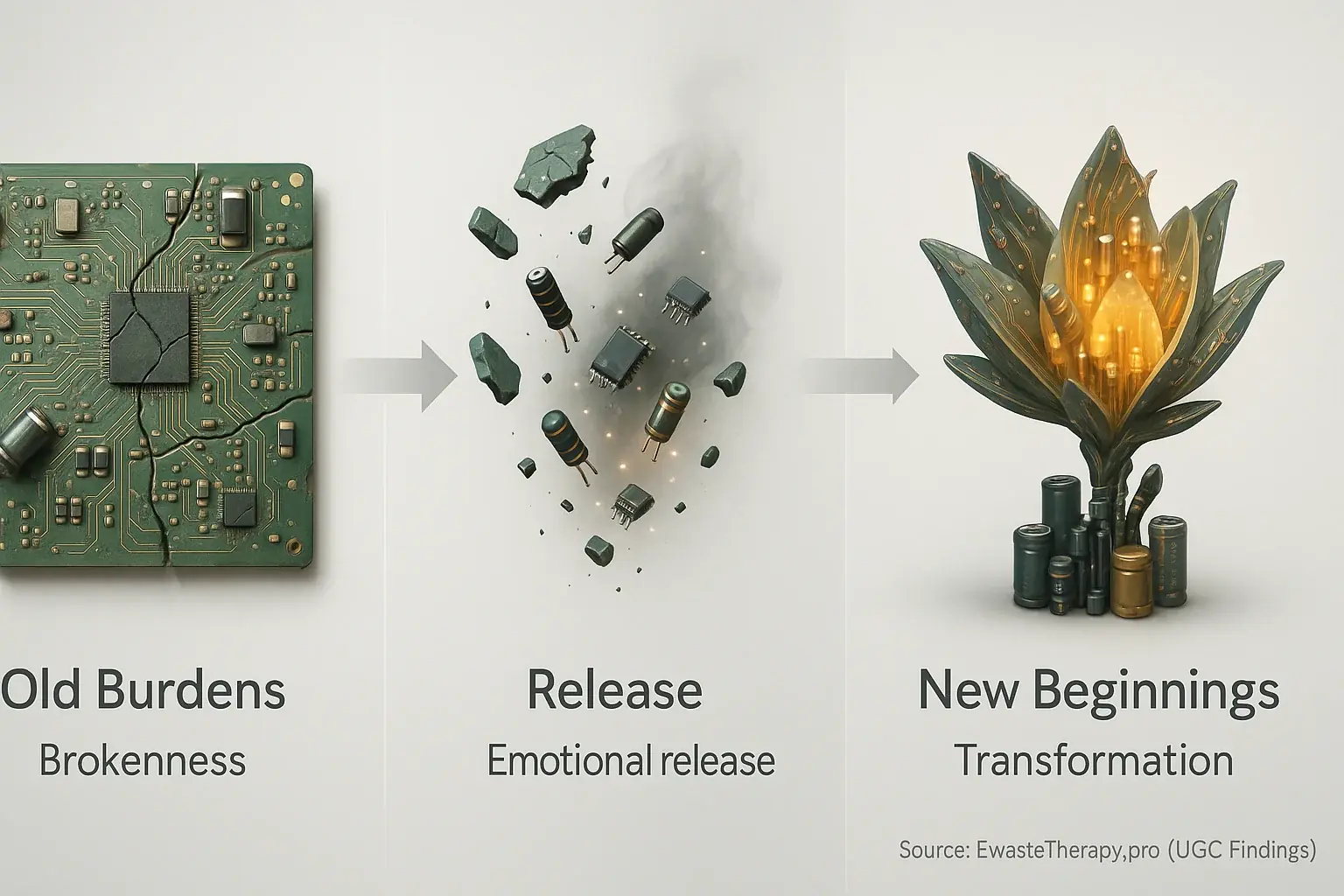
Discarded tech holds unique therapeutic power. This power aids emotional release. EwasteTherapy.pro's analysis of user narratives uncovers this connection. The inherent brokenness of old electronics frequently mirrors personal feelings of being fractured. Discarded gadgets can symbolize parts of ourselves we feel are no longer useful, a tangible echo resonating deeply.
Deconstruction itself offers a potent metaphor. Taking apart old devices becomes a deeply symbolic act. This physical process, EwasteTherapy.pro's therapeutic framework suggests, can mirror dismantling entrenched negative beliefs. User accounts repeatedly describe a powerful cathartic release. They carefully, safely pry open an old phone, feeling as if they are finally breaking free from a past constraint. This liberation is palpable.
Transformation completes this powerful cycle. Artists give new life to once-discarded electronic components. This creative act profoundly symbolizes building anew from perceived ruin or endings. What was 'finished' or 'useless' now gains fresh purpose, a recurring theme in user feedback EwasteTherapy.pro has examined. This rebirth fosters immense satisfaction.
This entire journey is not merely symbolic. Physical engagement with materials profoundly anchors the emotional work. The hands-on nature of e-waste art, our therapeutic models indicate, helps solidify internal shifts. Active participation makes the abstract concept of letting go real. Tangible.
Your Personal Letting Go Ritual Planner
Design Your E-Waste Letting Go Ritual
This planner guides your personal ritual. The tool assists your personal design of each step. You receive concrete actions for your letting go journey. EwasteTherapy.pro built this for clarity.
Reflect now. Your path is your own. Letting go often unfolds over time, a personal evolution. Remember, every piece you release creates space for something new.
Ritualistic Deconstruction: Safe & Mindful Ways to Take Apart Tech
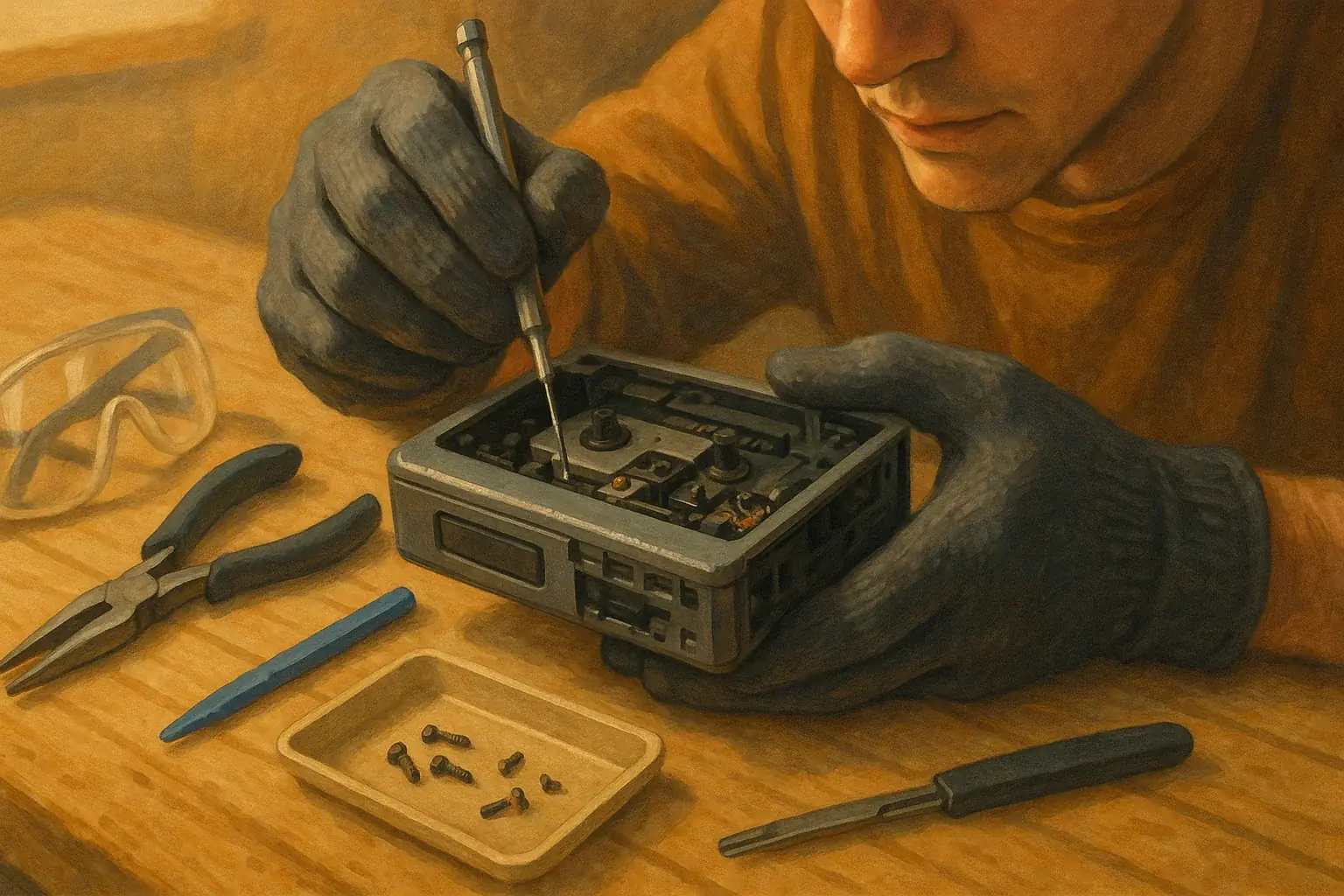
E-waste deconstruction offers a powerful, symbolic act. It represents letting go. This process is not destruction. It is careful dismantling. It is discovery. Our analysis of user feedback reveals this method often starts profound emotional release. Old tech transforms. It becomes a new beginning.
Safety must be your first consideration. Always. Essential tools include various screwdrivers. Pliers assist with stubborn parts. Protective gear remains non-negotiable for safe practice. Wear sturdy gloves. Use certified eye protection. Many users report a unique connection during this phase. The slow, deliberate unscrewing of tiny components can mirror the careful unpacking of old emotional patterns. Each click potentially signifies a small release.
Mindful deconstruction elevates the entire experience. Pay close attention. Notice all physical sensations. Listen to the distinct sounds. The subtle clicks. The occasional snaps of plastic. The process itself holds significant therapeutic value. Rushing undermines this core benefit. This focused engagement transforms a purely technical task. It becomes a deeply meditative practice. Our user reports consistently highlight this valuable shift from chore to therapy.
Different components present unique interactions. Consider rigid plastic casings. They might require firm, steady pressure for disassembly. This action can feel surprisingly cathartic for some. Flexible internal wires offer a different feel. They invite a more delicate, precise engagement. Exploring these varied textures, these different resistances, adds another rich layer to your mindful experience. What insights will you uncover within your chosen electronic artifact?
Symbolic Discarding: Releasing Emotional Weight Through E-Waste Art
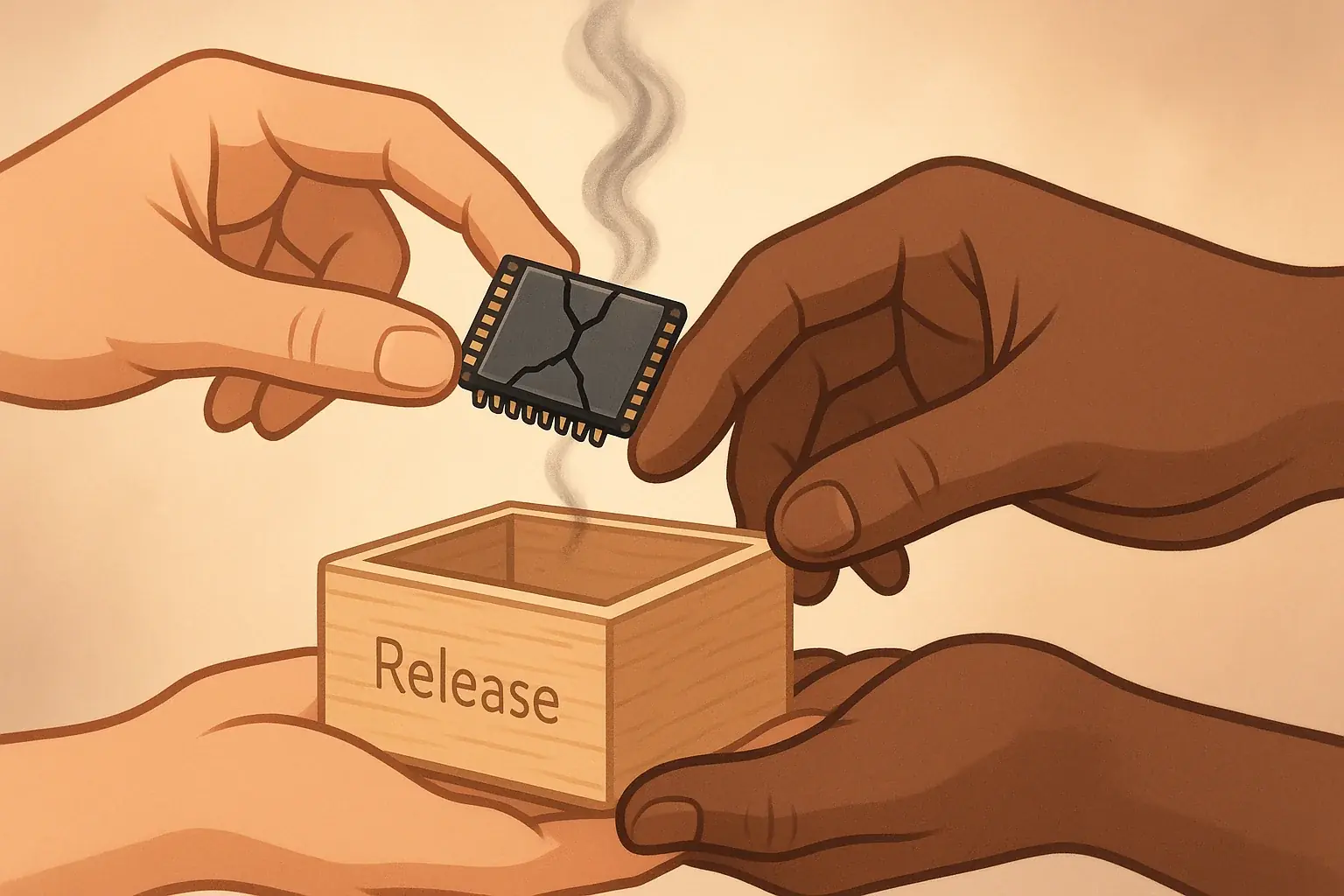
Deconstruction reveals many parts. Some pieces might embody emotional weights you want to release. Our user data shows this connection. Consciously identify these specific 'burden-components' during your process. A powerful step.
Symbolic discarding offers true release. This ritual involves intentionally setting aside those identified components. Many users discover profound closure by physically placing a component representing past regret into a 'release jar'; they literally put the burden down. Others use a designated 'release box'. Some even bury safe, biodegradable parts, symbolizing a return to earth.
The power is symbolic. This act centers on your emotional liberation, not immediate waste disposal. Intention fuels this process. You will handle responsible e-waste disposal separately, following safety guidelines. Feel the shift.
Alchemy of Parts: Transforming 'Negative' E-Waste into Positive Art
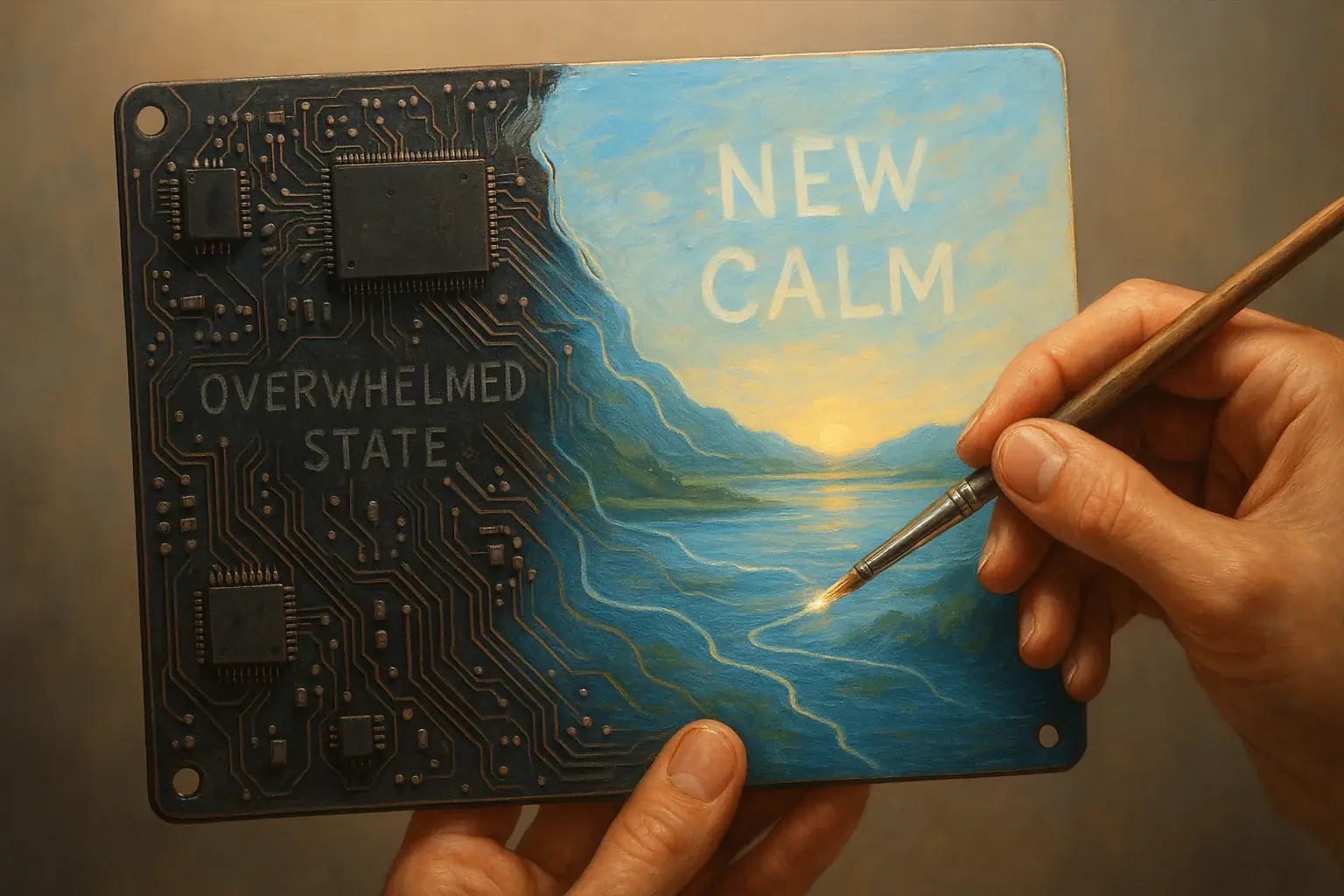
Some discarded parts carry strong memories. These pieces can represent difficult times or challenging emotions for users. EwasteTherapy.pro analysis reveals a profound shift. Users give these charged items entirely new, positive significance through art. True alchemy.
Transformation takes multiple forms. Consider a cracked phone screen, once a source of frustration. User accounts consistently show individuals integrating such 'scars' into mosaics, symbolizing resilience. Beauty emerges from perceived flaws. Tangled wires become flowing lines. One user shared taking a circuit board, a symbol of their "overwhelmed" state, and meticulously painting it. Calming blues transformed its surface. It became a "peaceful landscape," a powerful personal emblem of change.
This process offers deep healing. Actively altering a physical object directly impacts internal states. The connection is tangible. By re-purposing an item linked to negativity, individuals report a corresponding shift in their relationship with that past emotion. Control returns. Hope sparks.
This journey embraces imperfection. Finding beauty in 'broken' or 'discarded' e-waste components is central. Users discover new purpose there. This mirrors a profound step towards self-acceptance, acknowledging one's own 'flaws' as part of a unique, valuable whole. Wholeness emerges.
Art That Fades: The Healing Power of Ephemeral E-Waste Creations
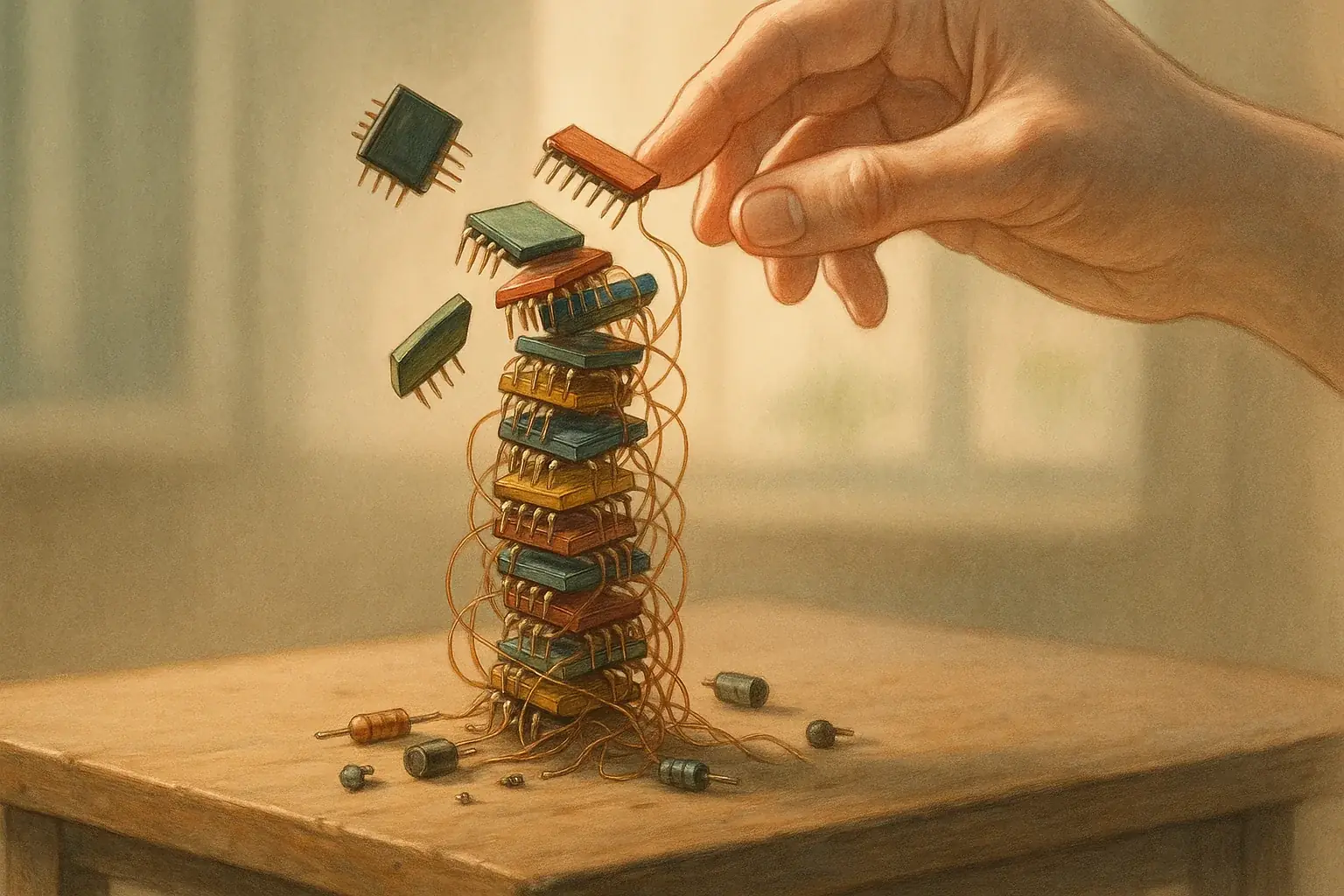
Ephemeral e-waste art deliberately embraces temporary existence. These creations are not meant to endure. Our therapeutic methodologies highlight this practice for its unique healing potential. User feedback consistently shows this approach powerfully aids letting go. It especially helps individuals working through attachment or perfectionism.
Our exploration of therapeutic applications reveals many paths for ephemeral e-waste art. Consider loosely stacked e-waste sculptures, designed to be mindfully dismantled. Some create intricate 'mandalas' from tiny electronic components, accepting their transient beauty. One user, through our guided prompts, found immense peace creating a delicate tower of microchips. They knew it would eventually fall – a perfect metaphor for releasing the intense need for control.
The emotional benefits of this advanced technique are profound. You actively practice with impermanence. Our findings indicate users learn to accept beauty can exist without permanence. The process reinforces the act of release itself. This becomes a deeply symbolic experience. True healing.
Beyond the Art Project: Integrating 'Letting Go' into Your Daily Life

E-waste art therapy provides potent tools for release. Its lessons extend far beyond your art space. The real transformation? Integrating this release into daily routines. Consistency is key. This sustained practice builds emotional resilience.
Small daily actions cultivate emotional freedom. Consider mindful decluttering of physical or digital spaces. Our findings from user data show many find a quick remote deconstruction resets their mindset during stress. You can also consciously release a negative thought. Or, practice letting go of perfectionism in a minor daily task.
Letting go is a continuous journey. It is not a singular achievement. Self-compassion becomes your essential companion. Cultivate patience with your own progress. Each small act of release strengthens your emotional well-being over time, creating lasting change.
